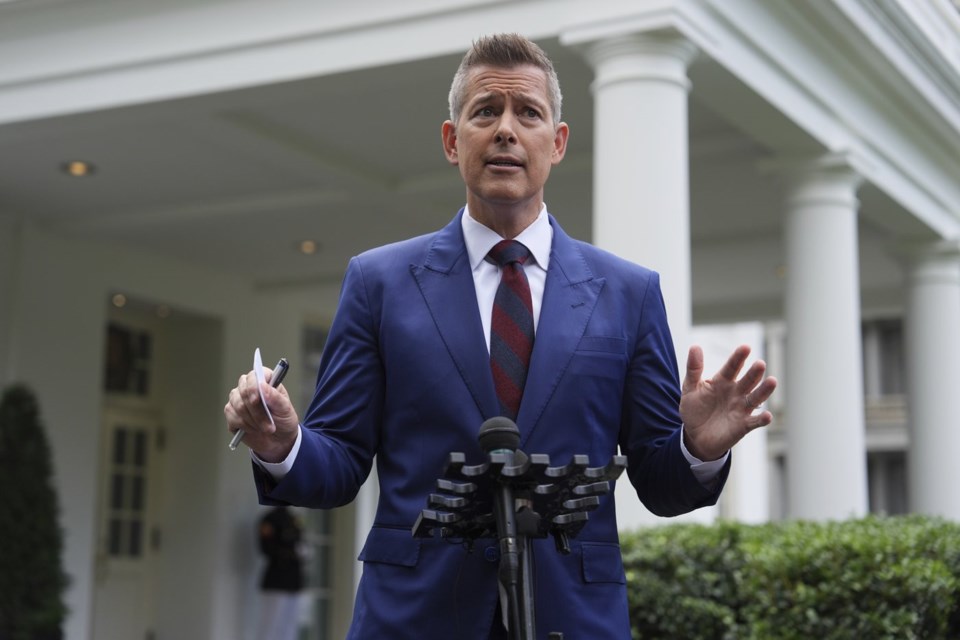The Trump administration proposed a major overhaul of the U.S. air traffic control system on Thursday in the wake of recent and that have put a spotlight on the outdated network.
The plan calls for six new air traffic control centers, along with technology and communications upgrades at all of the nation’s air traffic facilities over the next three years, said Transportation Secretary Sean Duffy. How much it will all cost wasn’t immediately revealed.
“Decades of neglect have left us with an outdated system that is showing its age,” Duffy said in prepared remarks. “Building this new system is an economic and national security necessity, and the time to fix it is now.”
The Trump administration wants to add fiber, wireless and satellite technology at more than 4,600 locations, replace 600 radars and increase the number of airports with systems designed to reduce near misses on runways.
Six new air traffic control centers also would be built under the plan and new hardware and software would be standardized across all air traffic facilities.
The plan has an aggressive timeline, calling on everything to be finished by 2028.
The House Transportation and Infrastructure Committee estimated last week that it might cost $12.5 billion to overhaul the air traffic control system, but that estimate was developed before the Transportation Department revealed the details of its plan, so it’s not clear if that number is reasonable.
To build the system in three to four years, as planned, Congress must give the Federal Aviation Administration all the money up front, Duffy said, who compared the proposal with upgrading from a flip phone to a smartphone.
Trump said Thursday that the plan will revolutionize flying. “The new equipment is unbelievable what it does,” he said from the Oval Office. He began to say it may even alleviate the need for pilots before adding, “In my opinion, you always need pilots. But you wouldn’t even have to have pilots. This system is so incredible.”
The aging system and its struggles to handle more than 45,000 daily flights have come under renewed scrutiny since the in January between a military helicopter and a commercial airliner that killed 67 people over Washington, D.C.
The crash showed the need for these upgrades, Duffy said in front of airline officials, union leaders and family members of those who died in the crash near Reagan National Airport. "If there are foreseeable issues in the airspace you would expect someone to take actions to save lives,” Duffy said.
“This is bold. This is going to be challenging, but we absolutely can do it,” he said.
Following the midair crash, Trump what he called “an old, broken system” and to tackle the nationwide while blaming the previous Biden administration for both problems.
But the weaknesses within the air traffic control system have been highlighted for years in hearings before Congress and government reports. The struggles to keep up with increasing air traffic has been recognized since the 1990s — long before either Trump or Biden took office.
The Trump administration’s overhaul plan will need backing from Congress and enough funding to be more effective than previous reform efforts during the last three decades. Already more than $14 billion has been invested in upgrades since 2003 but none have dramatically changed how the system works.
The Federal Aviation Administration has been working since the mid-2000s to make upgrades through its .
One of the biggest challenges with a massive upgrade is that the FAA must keep the current system operating while developing a new system and then find a way to seamlessly switch over. That’s partly why the agency has pursued more gradual improvements in the past.
The shortage of controllers and technical breakdowns came to the forefront in recent weeks when a radar system briefly failed at the , leading to a wave of flight cancellations and delays.
Without the planned upgrades announced Thursday, those breakdowns will repeated around the nation, Duffy said. “Newark has been a prime example of what happens when this old equipment goes down,” he said.
Josh Funk And John Seewer, The Associated Press




